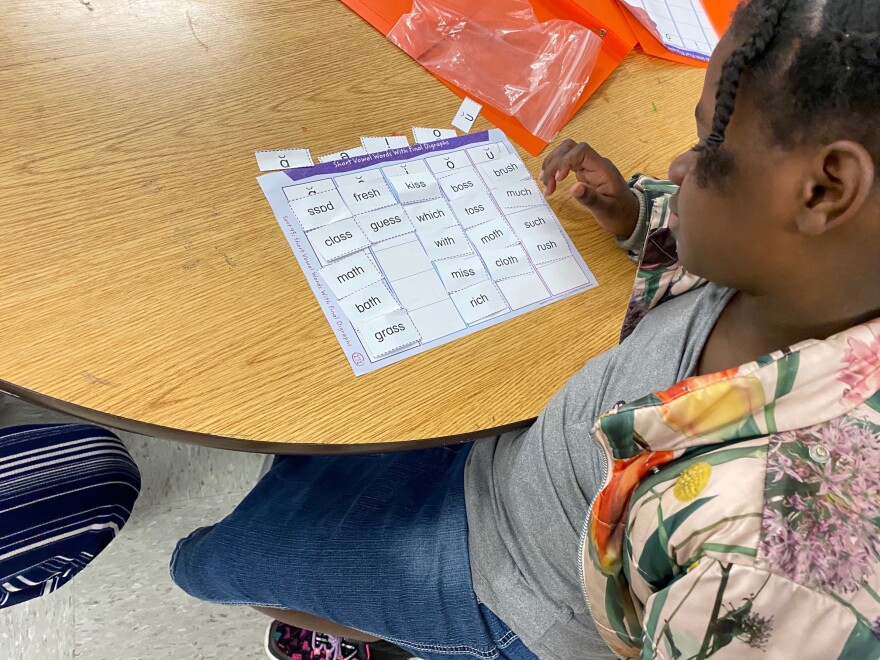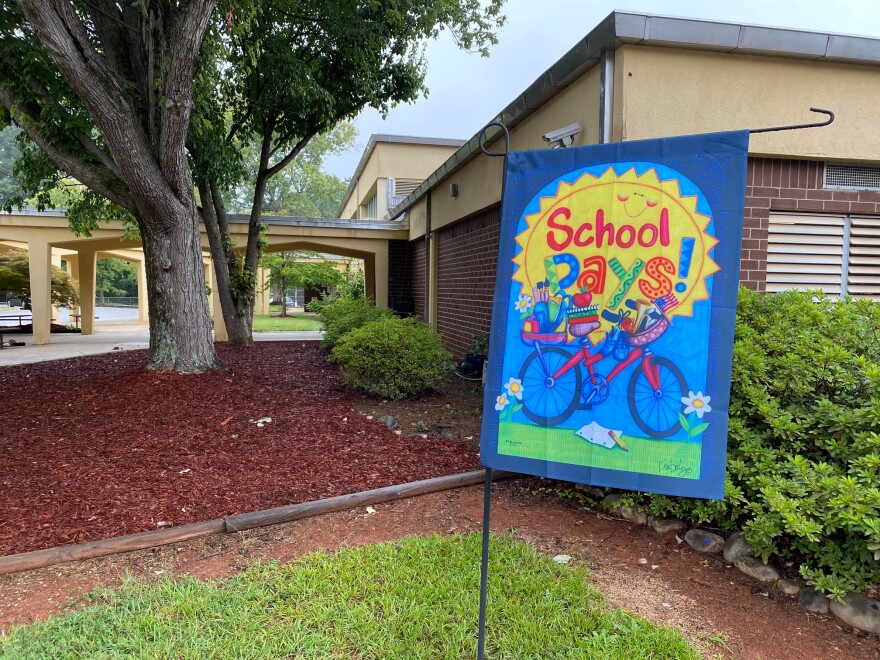Monday is the first day of school for most North Carolina students. It’s a fresh start for students and teachers, but plenty of ongoing challenges and lingering questions will greet them.
Here’s a look at five big questions facing families, educators and policy makers.
Where will students land?
School districts across North Carolina have seen enrollment decline — slowly at first, and more rapidly when the pandemic disrupted in-person classes in 2020. Last year didn’t bring the rebound district officials hoped for.
This year will be a test of whether pandemic shifts are lasting or temporary. That won’t be clear on the first day, but this fall will bring state tallies for all public schools. That includes charter schools, where enrollment has grown steadily for years.

Before the pandemic, private school enrollment in North Carolina had been flat or declining, but the last couple of years brought a spike. State tallies show the state had approximately 115,000 students in private schools last year, up 7% over the previous year and 15% over five years. That total includes more than 11,000 students in Mecklenburg County.
Those increases have been even more pronounced in Union County (up 31% in one year and 47% in five) and Iredell County (up 21% in one year and 18% in five). Of course, the totals in those counties are relatively small (3,254 in Union and 1,430 in Iredell), so a new school or two can drive a big percentage increase.
Home-schooling surged more than 20% in the 2020 school year, when many public schools opened with remote classes, then dropped back somewhat last year as in-person classes resumed. But the estimated number of home-schooled students in North Carolina is up 26% in the past five years.
What’s the safety plan?
COVID-19 precautions are poised to fade into the background as schools begin, though a fall/winter surge or a new variant could change that. Even though many counties remain at the “high community transmission” level, the North Carolina School Boards Association reports that no districts plan to require masks at this point.
The Charlotte-Mecklenburg school board split this week over a procedural question about its mask policy, but no one argued for mandatory face coverings.
“No one, no one on this board, is talking about having a mask mandate now,” board member Margaret Marshall said. “So masks are optional. Folks, do what you need to do to protect your health or protect whatever situation you have at home when school starts, and we’ll look forward to that.”
Concerns about guns and violence remain high, with the memory of the mass school shooting in Uvalde, Texas, still fresh in memory. Many districts are adding armed school resource officers. In many counties law enforcement agencies spent the summer reviewing plans for dealing with a school attack and educators got training in how to respond.

In a video message to Union County Public Schools families, Assistant Superintendent Jarrod McCraw said the sheriff’s office, all the municipal police departments and even state officers have visited schools to make sure they’re familiar with the layout and in touch with school officials.
“We value those partnerships with state, local and federal agencies and we make sure that we listen to them,” McCraw said. “And anything that they suggest, or if they want to come into our schools they’re always welcome to come into our schools.”
In Charlotte-Mecklenburg Schools, which saw a record number of guns on campuses last year, the walk-through body scanners that were installed at high schools last spring will go into K-8 and middle schools throughout the coming school year. CMS devoted its Aug. 10 podcast to safety measures.
Not all safety measures will be visible. Schools across North Carolina are using Say Something or similar reporting systems to give students an anonymous option for reporting problems. Those could include rumors of someone bringing a gun or planning an attack, but they also include such things as bullying and self-harm, which are far more common.
Will there be enough teachers?
Vacancy numbers change daily, but districts in the Charlotte area and across the state are seeing significantly more unfilled teacher jobs than they have in past years.
“We’re seeing stories coming out of all types of districts across the country that they’re seeing more and more teachers leave the profession, in addition to less teachers coming into the college of ed, which was of course starting to happen before the pandemic,” CMS Human Resources Chief Christine Pejot said recently. “I think following the pandemic stakes became much higher and pressure was increased on teachers.”
The vast majority of students will return to a classroom with a permanent teacher, but a significant minority will start with a substitute or a teacher who has agreed to cover an extra class during planning periods.
Bus driver vacancies are running high too, which means the usual back-to-school delays could be exacerbated.
What’s the plan to offset academic setbacks?
Last year’s test-score release brought grim evidence that remote learning came with high academic costs. North Carolina will release 2022 results on Thu, Sept. 1. School letter grades and “low performing school” labels that were suspended during the pandemic will be back.
Meanwhile, districts are using federal COVID-19 aid to expand existing tutoring programs and launch new ones. Expect to hear a lot about “high-dosage tutoring,” which means frequent sessions with tutors who build a relationship with an individual child or a very small group. The challenge to watch will be whether the students who were most isolated and saw the biggest academic regression can be recruited to attend sessions before or after school and on weekends.

Many districts are also adding counselors, psychologists and social workers to provide the support students need to be able to focus on schoolwork.
Ongoing efforts to help young children read better will continue. Last year North Carolina began mandatory science-of-reading training for elementary school teachers. That will continue this year, with some teachers moving into their second year of the program while other districts begin the first round.
On Thu, Aug. 25, the Department of Public Instruction posted a report from Amplify, the company that conducts reading assessment for K-2 students, showing that North Carolina students made bigger gains last year than counterparts in other states using the same assessments. State Superintendent Catherine Truitt hailed the data as an early sign that the new approach to teaching will pay off.
Will school lunches still be free?
During the academic and financial turmoil of the pandemic, the federal government footed the bill for all school lunches. That program expired over the summer.
That means schools are reverting to the old system, which can be complicated. Some schools with high poverty levels will still offer free lunch for all, under the U.S. Department of Agriculture’s community eligibility provision. In other schools, students will have to pay for lunch unless their families fill out paperwork to determine whether they’re eligible for federal subsidies.


